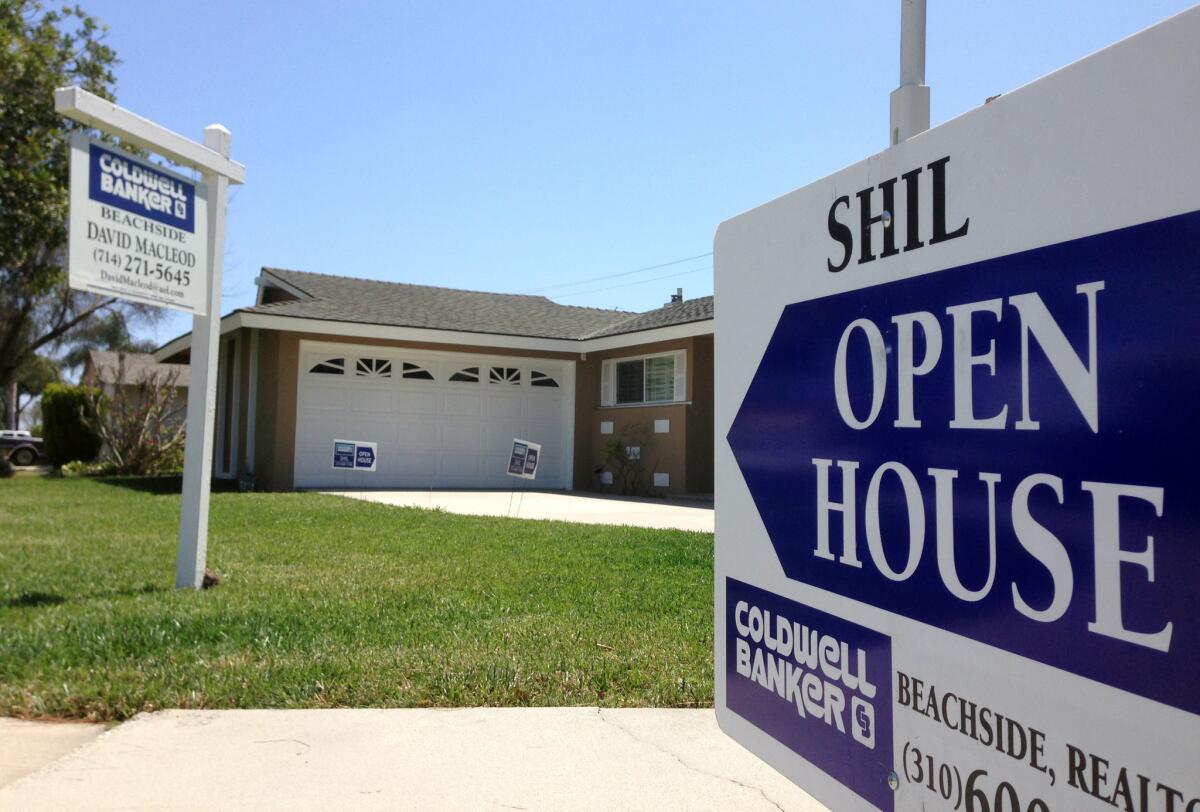Barely 1 in 5 L.A. homes affordable to middle class, study finds

The bad news: Los Angeles County is the second-least affordable housing market in the country for a middle-class family.
The sort-of good news: At least it’s not getting much worse.
That’s according to a new report out Tuesday from real estate website Trulia, which found that a household earning the median income of $54,000 can afford just 22% of homes in L.A. County on 31% of their income or less. Only in San Francisco, at 15%, can fewer middle-class families afford to buy. Six of the seven least-affordable markets in the nation are in California, including San Diego (25%), Orange County (26%) and Ventura County (33%).
The report also tracked affordability by area code within L.A. County. They found that in the 626 – Pasadena and the San Gabriel Valley – just 11% of median-income-earning households could afford a typical house. In the 310 – the Westside and beach towns – 14% could. In the 213 – Downtown and Central L.A. – that figure was 16% while in 818 and 747 in the San Fernando Valley, it’s 16%.
The numbers would come as no surprise to anyone who tracks the housing economy in California, where sky-high prices coupled with soft income growth have driven home-buying out of reach for many. Indeed, considering that prices have climbed by roughly one-third in Southern California over the last two years, it might come as a surprise that affordability hasn’t gotten worse – this year’s affordability figure is just 2 percentage points lower than last year’s rate of 24%. But rock-bottom interest rates have helped to keep the monthly cost of ownership in check, noted Trulia chief economist Jed Kolko.
That will likely change eventually, Kolko wrote. Even though home price gains are slowing – the median price in the six-county Southland climbed 6.8% in October, according to CoreLogic DataQuick – they’re still growing faster than incomes. If interest rates start climbing, Kolko wrote, there’s just one likely outcome.
“Unless incomes increase substantially, homeownership will slip further beyond the reach of many households,” Kolko wrote.
Keep an eye on housing and real estate in Southern California. Follow me on Twitter at @bytimlogan







